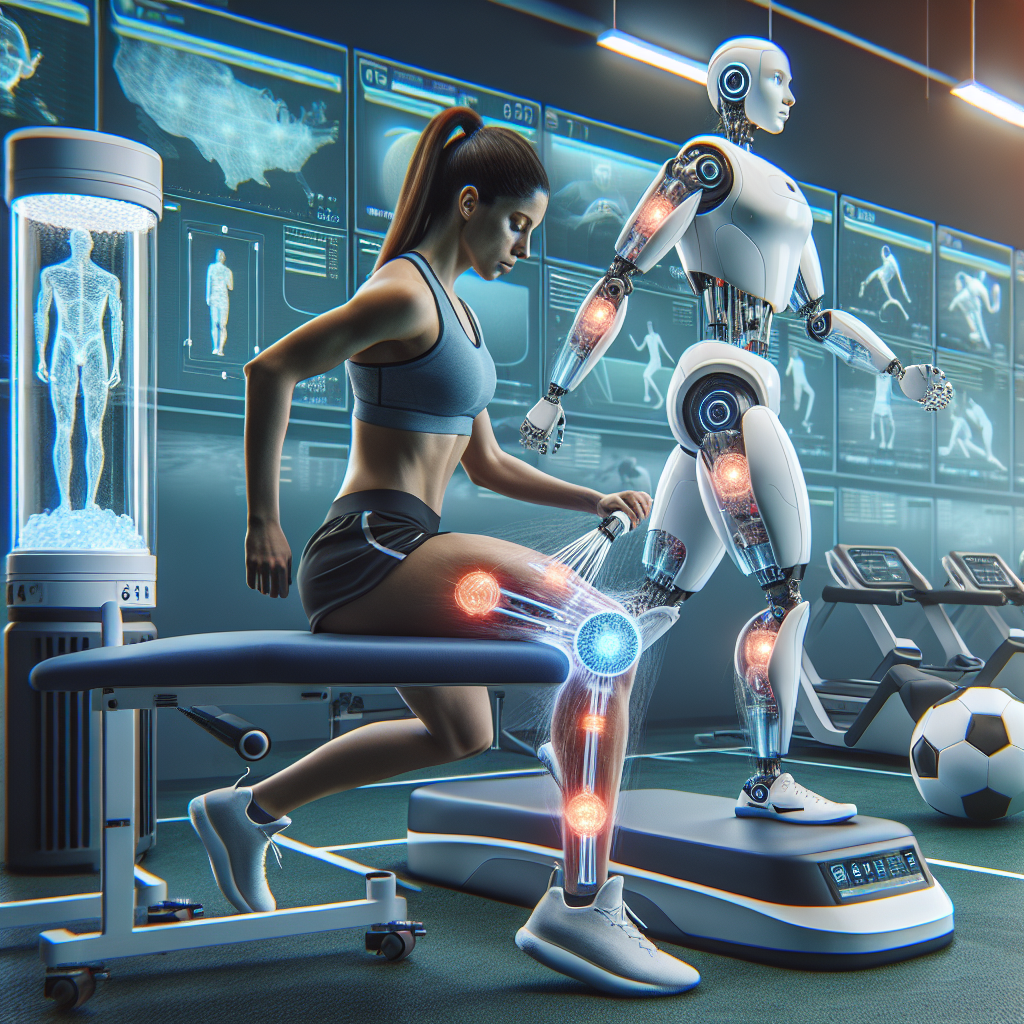Athlete recovery is a crucial aspect of sports performance, as it allows athletes to rest, repair, and rejuvenate their bodies after intense physical exertion. Traditionally, athlete recovery has been focused on rest, hydration, nutrition, and physical therapy. However, in recent years, advancements in technology, particularly artificial intelligence (AI), have revolutionized the way athletes recover.
AI has the potential to enhance athlete recovery by providing personalized and data-driven solutions to optimize performance, prevent injuries, and improve overall well-being. From analyzing biometric data to creating personalized recovery plans, AI is transforming the way athletes approach recovery. In this article, we will explore the role of AI in enhancing athlete recovery in sports and its potential benefits.
1. Monitoring and Analyzing Biometric Data
One of the primary ways AI is enhancing athlete recovery is through monitoring and analyzing biometric data. AI-powered wearables, such as smartwatches and fitness trackers, can track various metrics, including heart rate, sleep patterns, and stress levels. By collecting and analyzing this data, AI can provide insights into an athlete’s recovery status and suggest personalized recovery strategies.
For example, AI can analyze an athlete’s heart rate variability (HRV) to determine their readiness for training or competition. By tracking changes in HRV over time, AI can identify trends and patterns that may indicate fatigue, stress, or overtraining. This information can help coaches and athletes adjust training programs, rest periods, and recovery strategies to optimize performance and prevent injuries.
2. Personalized Recovery Plans
AI can also create personalized recovery plans based on an athlete’s individual needs and goals. By analyzing biometric data, training logs, and performance metrics, AI can recommend specific recovery strategies, such as rest, hydration, nutrition, and recovery modalities (e.g., massage, cryotherapy, compression therapy). These personalized plans can help athletes recover faster, reduce the risk of injuries, and improve overall performance.
Furthermore, AI can adapt recovery plans in real-time based on changes in an athlete’s biometric data or training load. For example, if an athlete’s HRV indicates high stress levels or fatigue, AI can recommend additional rest or recovery activities to prevent overtraining and optimize recovery. This dynamic approach to recovery planning can help athletes stay healthy, perform at their best, and achieve their goals.
3. Injury Prevention and Rehabilitation
AI is also being used to prevent injuries and aid in the rehabilitation process. By analyzing biomechanical data, movement patterns, and injury risk factors, AI can identify potential vulnerabilities and suggest corrective exercises or movement patterns to reduce the risk of injuries. Additionally, AI can track an athlete’s progress during rehabilitation and provide feedback on their recovery status, range of motion, and strength gains.
For example, AI-powered motion analysis systems can detect deviations in movement patterns that may increase the risk of injuries, such as ACL tears or shoulder impingement. By analyzing these patterns and providing real-time feedback, AI can help athletes adjust their technique, improve their movement quality, and reduce the risk of injuries. This proactive approach to injury prevention can help athletes stay healthy, perform at their best, and prolong their careers.
4. Recovery Monitoring and Feedback
AI can also provide real-time monitoring and feedback on an athlete’s recovery status. By integrating with wearable devices and sensors, AI can track changes in biometric data, movement patterns, and performance metrics during training sessions or competitions. This real-time feedback can help athletes and coaches adjust their training intensity, rest periods, and recovery strategies to optimize performance and prevent injuries.
For example, AI-powered coaching platforms can analyze an athlete’s performance data during a training session and provide feedback on their technique, pacing, and effort level. This feedback can help athletes make immediate adjustments to their training plan, improve their performance, and reduce the risk of injuries. By providing real-time insights and recommendations, AI can enhance athlete recovery and performance in sports.
FAQs:
Q: How is AI different from traditional recovery methods?
A: AI leverages data-driven insights and personalized recommendations to optimize athlete recovery, whereas traditional methods rely on general guidelines and subjective assessments. AI can analyze biometric data, track performance metrics, and create personalized recovery plans based on an athlete’s individual needs and goals.
Q: Can AI prevent injuries in sports?
A: Yes, AI can help prevent injuries by analyzing biomechanical data, movement patterns, and injury risk factors to identify potential vulnerabilities. By providing real-time feedback and insights, AI can help athletes adjust their technique, improve their movement quality, and reduce the risk of injuries.
Q: How can athletes benefit from AI in recovery?
A: Athletes can benefit from AI in recovery by optimizing their performance, preventing injuries, and improving overall well-being. AI can create personalized recovery plans, monitor biometric data, and provide real-time feedback to help athletes recover faster, reduce the risk of injuries, and perform at their best.
Q: What are some examples of AI-powered recovery technologies?
A: Examples of AI-powered recovery technologies include smartwatches, fitness trackers, motion analysis systems, and coaching platforms. These technologies can track biometric data, analyze movement patterns, and provide personalized recommendations to enhance athlete recovery in sports.

